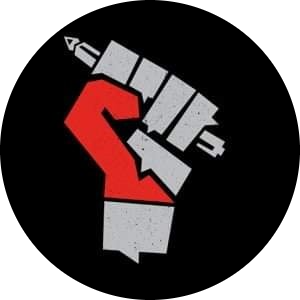Shah Inayatullah, commonly known as Sufi Shah Inayat Shaheed, was a spiritual guide and reformist of Sindh. He was born in a noble family of Makhdoom of Meeranpur (Jhok), Sindh in 1655. He obtained a basic education from his father and when he reached the age of fifteen, he went to Multan in the quest for Truth and spiritual guidance.
Thus, Shah Inayat spent ten years getting spiritual education and then returned to Sindh and firstly settled at Thatta but the conservative religious scholars of Thatta could not endure the growing famousness of Shah. Furthermore, they accused Shah that his disciple (Ghulam Muhammad) prostrated him, which has proscribed in the Divine law consequently, Shah left Thatta and permanently migrated to Jhok from where he spread spiritual knowledge to his admirers.
The condition of Sindh was too miserable and perceived as religiously hierarchical in which the Pirs, Sayyids, Zamindars, Pirzads, etc., had supremacy over Sindhi society. During Shah’s era resultantly, the ordinary life of the people was unprosperous. In these wretched circumstances, Shah Inayat emerged as a reformist of Sindh and encouraged the desperate people by giving the economical law of equality.
He accentuated equitable sharing in the productive process and rose the slogans of, ”Jeko Kherry So Khaye” (he who cultivates has the right to eat) and collective farming.
He had deciphered the law of economics that ”the distribution of wealth is dependent upon the sharing of labor in the productive progress”. It means the fair distribution of wealth will be justified after participation in the productive process. If someone does not participate in productive progress, then he will not have the right to the distribution of wealth.
Moreover, he accentuated equitable sharing in the productive process and rose the slogans of, ”Jeko Kherry So Khaye” (he who cultivates has the right to eat) and collective farming. Shah Inayat was the first who introduced economical equilibrium in the Sub-continent, even, before the teachings of Shah Waliullah and Karl Marx. Thus, all the followers and admirers of Shah accepted the scheme of collective farming and began to cultivate the land on the given proposal.
Shah Inayat declared his ancestor’s land, which was granted to his family by the state, would be collectively cultivated by the exertion of all his family members, disciples, and residents of Jhok and its yield would be equally distributed on a need basis.
All the big landlords of Sindh convened against Shah’s movement, and they complained to Lutuf Ali Khan, the governor of Sindh, in opposition to the growing influence.
Though the movement was rapidly propagated, and it effectively impacted the neighbouring landlords who exploit the peasants. Gradually, the neighbouring peasants started to demand the same scheme of Shah from their landlords, and some left their masters and joined the circle of the Shah. Resultantly, all the big landlords of Sindh convened against Shah’s movement, and they complained to Lutuf Ali Khan, the governor of Sindh, in opposition to the growing influence and development of Shah Inayat.
Hence, the governor advised them to settle the conflict in a deceptive way subsequently, they assaulted Jhok in which several devotees of Shah were put to death. Afterwards, the suffering devotees went to Delhi for justice, and they succeeded to defend their case. Thereupon, the Mughal emperor, Farrukhsiyar, removed Lutuf Ali Khan and replaced him with Nawab Azam Khan as the new governor of Sindh in 1716.
The landlords exploited this opportunity of replacement and enticed the new governor Azam Khan, resultantly he demanded the tax of land from Shah Inayat, but Shah repudiated to pay the tax of land by saying that the dues had been let off by the King. Hence, the governor sent lamentations to the emperor in which he wrote that Shah Inayat had proclaimed himself as an autonomous and had also declined to obey the command of the King. Consequently, Farrukhsiyar did not inquire into the matter and gave the edict of compressing the movement by force. Therefore, Azam Khan wrote letters to powerful landlords for assisting against the peasantry movement of Jhok. Most of the landlords joined Azam Khan’s force including Kalhora, the strongest landlord of Sindh consequently, the joint forces of Azam Khan began to assault the Jhok.
The followers of Shah Inayat had not had much war arms to defend the Azam Khan’s force but their spirituality with their master and power of faith resisted the joint forces. Thus, they decided to adopt guerrilla tactics to fight against their opponent. Subsequently, the battle continued for six months, and the joint forces employed all the tactics to crush the movement, but they failed. Thus, they decided to play a hoax on Shah Inayat to overcome him. The joint force sent a delegation to Shah Inayat for correspondence in which they offered that, if Shah Inayat would capitulate then it would be amnesty for all.
Shah Inayat accepted the offer and opened the door of Jhok fort. The governor summoned Shah Inayat to sign the promise when Shah Inayat entered the site of the governor, he was deluded by the governor and was restrained by the joint force, besides Jhok was pillaged by the governor’s army. Shah Inayat was presented before the Qazi to defend his movement of giving the right to peasants. Unfortunately, the conservative Ulema could not comprehend the true message of Shah and they adjudicated in the favor of the governor. Finally, the Sufi saint, who struggled for the right of peasants, was martyred on 8th January 1718.
The author holds a post grad degree from NIPS, Islamabad. He can be reached at aliasad326@gmail.com.




